Monsters on the Mind: Subjectivity, Objectivity, and Cataloging the Unknown
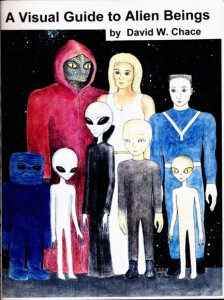 Last week I became fascinated, if one considers frantically (if incompetently) scouring the internet fascination, with an old book titled A Visual Guide to Alien Beings by David W. Chace. This book proposes to be a collection of descriptions of standardly encountered (established?) alien species drawn from abduction reports and contactee experiences. It’s a funny concept that I’ve ran into on Louis Theroux’s Weird Weekends where a fellow was compiling a “field guide” to aliens and in one of my favorite childhood books The UFO Hunter’s Handbook which includes a brief outline of different aliens one might encounter. The sheer bravado of the idea that one can catalogue beings that there is no consensus even exist is enjoyably (or frustratingly, perhaps) absurd. Is there even an agreed upon nature of these extraterrestrial beings among believers?
Last week I became fascinated, if one considers frantically (if incompetently) scouring the internet fascination, with an old book titled A Visual Guide to Alien Beings by David W. Chace. This book proposes to be a collection of descriptions of standardly encountered (established?) alien species drawn from abduction reports and contactee experiences. It’s a funny concept that I’ve ran into on Louis Theroux’s Weird Weekends where a fellow was compiling a “field guide” to aliens and in one of my favorite childhood books The UFO Hunter’s Handbook which includes a brief outline of different aliens one might encounter. The sheer bravado of the idea that one can catalogue beings that there is no consensus even exist is enjoyably (or frustratingly, perhaps) absurd. Is there even an agreed upon nature of these extraterrestrial beings among believers?
The short answer is no. There is no widely accepted belief in who is piloting these UFOs, where they come from, what they want, or what they look like. Is it therefore sound to decide that there are different species from different planets, dimensions, or planes? This seems like a giant, nigh farcical assumption to me. It would be easier if contactees could establish some sort of standard for their encounters; are the Greys hostile date rapists or benevolent environmentalists? While smugly contemplating the silly attempt of anyone to classify alien species it occurred that I own multiple books, and believe in their classifications, that do precisely the same thing. It’s just my books are about demons, angels, gods, or elementals instead of extraterrestrial visitors. I than began laughing in an empty room about how crazy that might seem to an outsider before I went to paste some more bible verses and supermodel pictures with the eyes sliced out on my bedroom walls.
With this incongruity now clear in my mind I realized that humans have for the longest time delved into the minutiae of the unknown. They have come up with ingenious and ingeniously stupid conceptions of the mechanics and structure of the universe. This is a very expansive topic that some believe, such as those that buy into magic or it’s children religion or science, explain existence in its entirety. I’m not going to attempt to go into that since I’m feeling slow right now and the answer to all those questions is right under our nose at all times. What I’d like to consider is our attempt to describe our (typically) unseen neighbors; the diverse species of the numinous or the cast that dwells behind the curtains. The crew that never rests.
The first of these that I am familiar with is the Jewish Shem ha-Mephorash which is an extrapolation on the ineffable name of God: IHVH or Yod Heh Vau Heh. The old Kabbalists took the four letters and expanded them into 72 names with the aid of three compounded verses found in the Book of Exodus (14:19-21). This extrapolation not only “simply” provides seventy two names with which to know the lord but a cosmology of angels and intelligences of various rank that rule in the Lord’s stead. As the Kabbalistic view of the Universe developed these powers would be attributed to different paths (which were derived from the letters of the Hebrew alphabet) and Sephiroth (derived from the ten basic numerals) which further explained their place and purpose. By the time that ceremonial magic was being firmly established in the modern world, in the late nineteenth century, the spirits of the Shem ha-Mephorash were allocated to different positions in the astrological starscape and with the Tarot.
ADVERTISEMENT
Late-Antiquity gave birth to the Celestial Hierarchy of Pseduo-Dionysius which provided the mediaeval church with varying orders of angels. Pseudo-Dinoysius evidently had access to the order of the heavens and communicated this to mankind all the way down from the brilliant Seraphim to the run-of-the-mill Angel. Magicians such as Johann Reuchlin would make use of Dionysius’ Hierarchy to later evoke and hold conference with these spirits. The late Middle Ages gave us a very important man with a very long name, Philippus Aureolus Theophrastus Bombastus von Hohenheim, who kindly and humbly shortened it to Paracelsus or “Greater than Celsus.” Everyone who has ever benefited from medicine needs to say a quiet thank you to Paracelsus since he really invented the modern concept. When not jumpstarting human medical technology Paracelsus was busy being one of the most famous alchemists and magicians of all time.
Paracelsus invented the “Alphabet of the Magi” which was used to communicate in various ways with angels and (re)popularized the 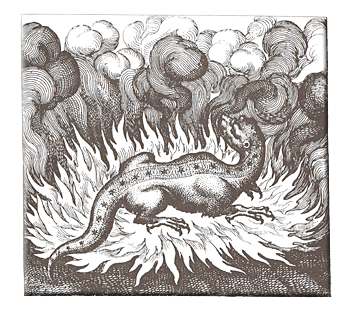 four classical elements as well as the three alchemical ones. More importantly for our purposes, it is in the writings of Paracelsus that we first find the groupings of elementals; beings attributed to the four elements and descendants of the Greek nereids, dryads, satyrs, and other nature spirits. These four classes of beings, salamanders, undines, sylphs, and gnomes, were said to be representatives of fire, water, air, and earth respectively. While today we have a much more expansive and correct table of elements (Paracelsus did name zinc) modern magicians justify the four by way of allegory. Something that is fiery could be the strong nuclear force, internal combustion, our beating hearts, or even our passions. Conversely earthly things could be seen as our monetary systems, fossil fuels, or cave base aliens. Or I’m mentally unhinged after years of studying magic and see sylphs where other people would see the wisps of a cloud.
four classical elements as well as the three alchemical ones. More importantly for our purposes, it is in the writings of Paracelsus that we first find the groupings of elementals; beings attributed to the four elements and descendants of the Greek nereids, dryads, satyrs, and other nature spirits. These four classes of beings, salamanders, undines, sylphs, and gnomes, were said to be representatives of fire, water, air, and earth respectively. While today we have a much more expansive and correct table of elements (Paracelsus did name zinc) modern magicians justify the four by way of allegory. Something that is fiery could be the strong nuclear force, internal combustion, our beating hearts, or even our passions. Conversely earthly things could be seen as our monetary systems, fossil fuels, or cave base aliens. Or I’m mentally unhinged after years of studying magic and see sylphs where other people would see the wisps of a cloud.
You see these gnomes or undines explain both our external and internal world. They can be seen as parts of our intelligence and comprehension, or they may be seen as little men in pointy hats, moving the Earth’s crust but invisible to the untrained eye save for when they appear in yard art. There are ways to go about calling up these creatures, and the classic Pentagram rituals teach and demonstrate a control over the four elemental qualities. So we are made to understand that these are not merely paranormal curiosities but integral parts of the composition of everything. Nothing in creation is wasted or arbitrary.
We can find this elemental scheme again in the angelic magic of Dr. John Dee, premier mathematician, and perhaps the most literate person as well, of his time and astrologer to Queen Elizabeth I. Dee spent years with another man named Edward Kelley transmitting astoundingly complex codices, symbols, and even another alphabet that explained existence from the viewpoint of the angels. Corrupted over time and only recently set right by modern scholarship even the hackneyed version of their system was found efficacious and edifying by those who used it. Using five tablets of lettered squares that described the four elements and the angels found within magicians were once more able to call up spirits to explain their office in the Great Scheme of Things and beseech them for their aide and knowledge.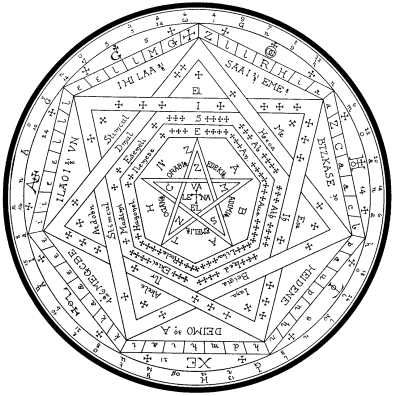
The manner in which one goes about calling up these angels, which according to many magicians appear in surprisingly coherent form, they use the language transmitted to Kelley and Dee. Modern scholars, even arch-skeptics such as James Randi, are at a loss to explain how the scoundrel Kelley (one of their most common criticisms is that Kelley was a convicted criminal) could have come up with an entirely new language. While philologist Donald Laycock has pointed out that Enochian is not as complex as it has been regarded in the past it is still possesses a unique syntax and morphology, qualities often lacking in other invented languages. Working up from the elemental basis of the Enochian universe we find ourselves farther and farther out into the thirty Aethyrs or heavens. Beginning with TEX, the thirtieth aethyr, and ending with LIL the hardy mental traveler will find themselves encountering the angelic governors of each realm.
One of the most popular systems of ceremonial magic today, Enochian is usually found to be delightfully effective. As mentioned in a previous article, the Enochian intelligences have even been compared the modern conception of aliens based on the eerie sketch of LAM by Aleister Crowley. One facet of what makes these angels so fascinating is that they are perfectly mapped out on the various tables; their exact names, their rank, and even their office or nature can be discerned from what letters compose their being and where they are located. It is fascinatingly organized and, in many ways, perfect. Earlier manifestations of Dee and Kelley’s angel magic gave us the planetary system of the Heptarchia Mysteria where the angels are ranked according to planetary correspondences. Even in a glyph as complex as the Sigillum dei Aemeth there is a distinct and impressive hierarchy formed according to a precise logic.
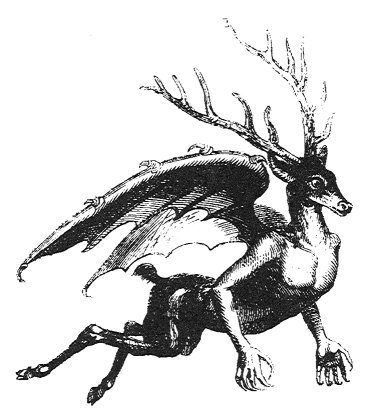 Moving down the Great Chain of Being we find ourselves in the realm of demons, specifically those spoken of in the Goetia a book that catalogues seventy two fiends who are said to be the djinns ordered by King Solomon to help build his Temple of no small amount of fame. Historically, it is obvious that some are in fact perversions of old Semitic gods and goddesses that competed with the cult of Jehovah while others are demons and djinns spoken of in the Talmud and Alf Laylah wa-Laylah (The Thousand and One Nights). However these beings have been extensively examined and, if the accounts are to be believed, called up from whatever sulphurous pit they call home and made to do the magician’s bidding. In the Goetia, which is also known as The Lesser Key of Solomon (The Greater Key is reserved for angelic beings), each demon is individually described. Their description includes their sigil or sign, their appearance(s) that they may make within the conjuror’s triangle, their capabilities, even, in certain cases, their hopes and dreams! Even if one does not intend to practice the Goetia it is worth owning a copy for entertainment and edification alone. In fact, modern editions of the Goetia are usually accompanied by some fantastic Dore-esque illustrations. These illustrations are taken from the French Dictionnarie Infernal which proposes to classify and describe even more demons that the Lesser Key itself.
Moving down the Great Chain of Being we find ourselves in the realm of demons, specifically those spoken of in the Goetia a book that catalogues seventy two fiends who are said to be the djinns ordered by King Solomon to help build his Temple of no small amount of fame. Historically, it is obvious that some are in fact perversions of old Semitic gods and goddesses that competed with the cult of Jehovah while others are demons and djinns spoken of in the Talmud and Alf Laylah wa-Laylah (The Thousand and One Nights). However these beings have been extensively examined and, if the accounts are to be believed, called up from whatever sulphurous pit they call home and made to do the magician’s bidding. In the Goetia, which is also known as The Lesser Key of Solomon (The Greater Key is reserved for angelic beings), each demon is individually described. Their description includes their sigil or sign, their appearance(s) that they may make within the conjuror’s triangle, their capabilities, even, in certain cases, their hopes and dreams! Even if one does not intend to practice the Goetia it is worth owning a copy for entertainment and edification alone. In fact, modern editions of the Goetia are usually accompanied by some fantastic Dore-esque illustrations. These illustrations are taken from the French Dictionnarie Infernal which proposes to classify and describe even more demons that the Lesser Key itself.
In modern magical theory (yes, that is a real thing) it is figured that the angels, demons, and other creatures are both subjective and objective. Some magicians propose that the entities are entirely objective and live their lives, or whatever the supernal equivalent of that is, independent of the magician. Others maintain that the creatures are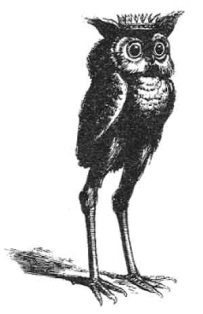 drawn from the depths of the subconscious in line with Crowley’s magnificent Initiated Interpretation of Ceremonial Magic where he declares that the demons of the Goetia are recognizably unlocked portions of the human brain.
drawn from the depths of the subconscious in line with Crowley’s magnificent Initiated Interpretation of Ceremonial Magic where he declares that the demons of the Goetia are recognizably unlocked portions of the human brain.
My own humble working theory is this: that there is, perhaps independently of my own mind, something akin to the Hindu akasha, the classical aethyr, or Eliphas Levi’s astral light. This “something,” as I have so elegantly named it, is accessible by different thought exercises, yoga, ritual, psychedelic substances, and/or concentration… once attained or “noticed” the magician or mental traveler is able to manipulate this substance. Now, perhaps there are archetypes that the astral light willingly assumes the shape of with the proper incantations, gestures, etc. Or this astral light is a landscape, quite like our physical landscape (though I have always perceived it as some odd mixture between second and third dimensional images), and by calling the various angels and demons one can summon them from their hideaways and heavenly abodes. These fascinating visitors have been instructive and amusing.
These grimoires, these grammars, are collections of shapes or visitors that the willing eye may behold.
MORE GREAT STORIES FROM WEEK IN WEIRD:


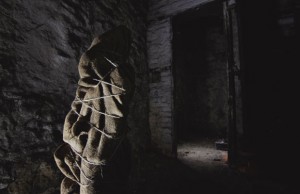
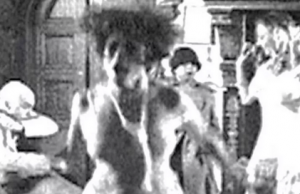
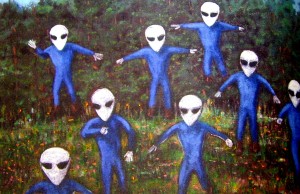
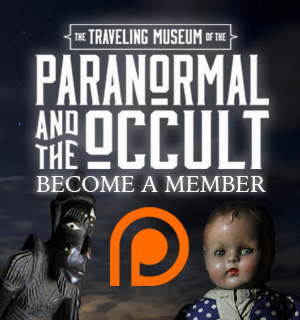
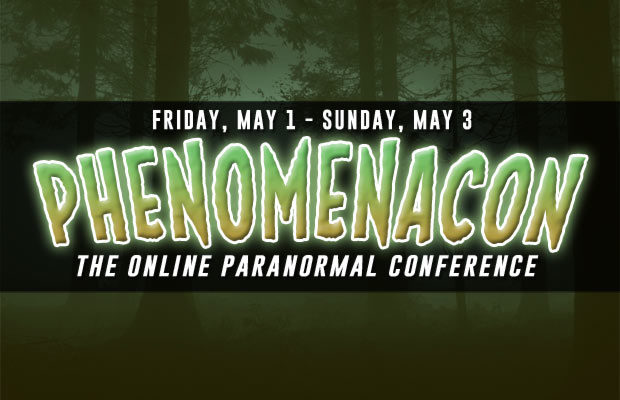
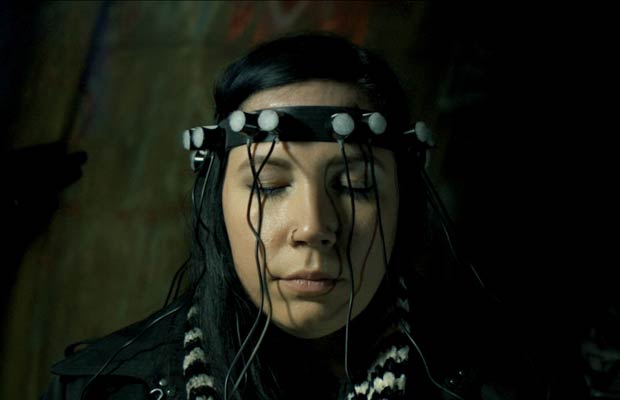

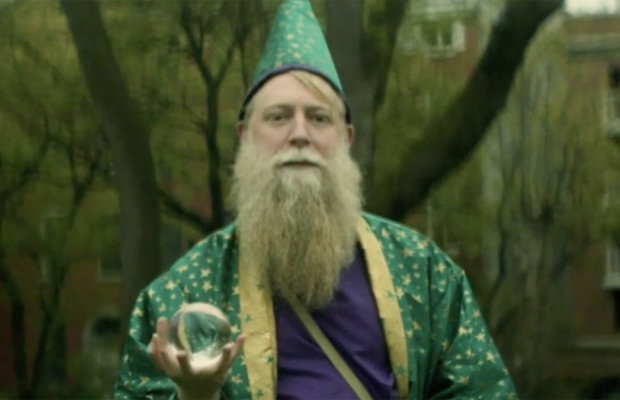

You must be logged in to post a comment Login